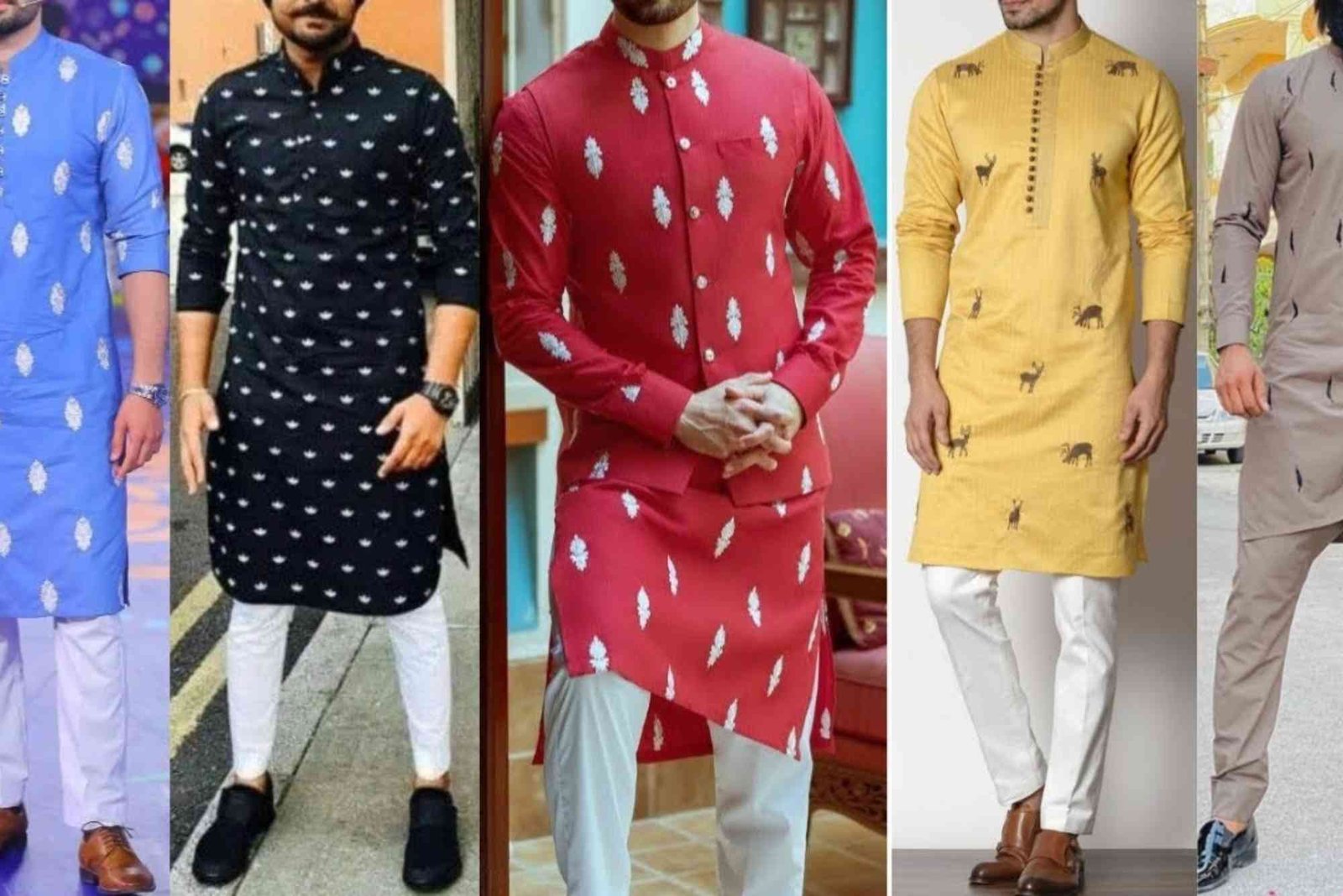Creating traditional wear feels meaningful when you understand fabric, stitches, and fit. Practical Tips: To Make A Kurta Pajama can transform beginners into confident creators. This timeless outfit demands precision, but it rewards patience with elegance, cultural pride, and style freedom. Whether you sew by machine or by hand, mastering these practical steps ensures neat lines, comfortable fit, and refined finishing. This guide explains materials, pattern cutting, stitching order, finishing, and common mistakes to help you succeed.
Why Learning To Make A Kurta Pajama Matters
A kurta pajama represents comfort and tradition. Personal tailoring provides custom sizing, fabric choice, and finishing quality. Instead of depending on ready-made outfits, a self-made kurta pajama reflects skill and creativity. In addition, handmade clothing often fits better than mass-produced options. When someone understands Practical Tips: To Make A Kurta Pajama, they can tailor styles for festivals, casual wear, weddings, and cultural events.
Many new tailors struggle with fabric cutting, neckline finishing, and sleeve shape. Smooth seams matter more than decoration. With steady practice and clear measurements, anyone can make a neat outfit. This guide prioritizes accuracy and comfort, because clothes must feel as good as they look.
Understanding Materials And Tools
Choosing The Right Fabric
Cotton, blended cotton, silk blends, linen, and rayon suit beginners well. These materials cut cleanly and handle stitches without slipping. Avoid very stretchy fabrics until you gain confidence. When following Practical Tips: To Make A Kurta Pajama, think about climate too. Cotton suits summer, while silk blends create festive elegance.
Essential Tools For Precision
Sharp dressmaker scissors, measuring tape, tailors’ chalk, sewing pins, a fine needle, and a reliable sewing machine help create clean edges. Quality thread prevents breakage. A steam iron improves finishing. Simple items deliver professional results when used consistently.
Measuring For Comfort And Fit
Taking Accurate Body Measurements
Measure chest, shoulder width, arm length, kurta length, wrist circumference, waist, hip, and pajama length. Do not pull the tape tight. Leave natural ease for movement. Kurta pajamas rely on clean drape rather than body-hugging structure, so allow an extra margin around chest and hips. These Practical Tips: To Make A Kurta Pajama ensure comfort during wear and activity.
Allowing Margin And Seams
Add seam allowance around all sides. Beginners often ignore seam margins and end up with tight clothing. Following a half-inch seam allowance across edges supports neat finishing. Pajama waist must include extra fabric for gathering and elastic or drawstring channel.
Drafting And Cutting Fabric
Marking Fabric Correctly
Fold your fabric lengthwise. Align patterns with grain lines to avoid twisting. Use chalk lines before cutting. Mark neck shape, armholes, shoulder slope, and placket placement. Neck depth should match personal preference and event style.
Precision Cutting Technique
Cut slowly along chalk lines. Keep scissor blades flat on the table for cleaner edges. Avoid jagged lines because they complicate stitching. Precise cutting is essential in all Practical Tips: To Make A Kurta Pajama guides.
Stitching The Kurta
Joining Shoulders And Neckline
Start with shoulder seams. Press them flat before stitching the neckline. Use neckline interfacing for structure. Round neck, band collar, and V-neck styles require different finishing. Hand hemming inside the neckline creates a polished effect. A carefully reinforced neckline prevents stretching.
Creating Sleeves With Ease
Stitch sleeves before attaching them to the kurta. Maintain a smooth curve at the armhole. Ease the sleeve fabric gently along the armhole without pleats unless intended for design. Pressing after stitching ensures clean lines. Proper sleeve finishing represents the heart of Practical Tips: To Make A Kurta Pajama sewing quality.
Side Seams And Hem Finishing
Sew side seams from underarms downward. Press seams open. A clean hem enhances grace while walking. Edge finishing with a narrow fold prevents fraying.
Stitching The Pajama
Waistband Technique
A pajama needs a comfortable waistband. Fold upper fabric to form a channel for elastic or drawstring. Secure edges neatly and avoid loose thread ends.
Leg Stitching And Hemming
Sew legs individually, then join them at the center. Balance seam alignment for comfort. Hem bottoms to desired length. Pajamas should allow easy movement and airflow.
Fit Testing And Adjustments
Checking Comfort And Balance
Wear the outfit before final hemming. Adjust tight areas near shoulders or waist. Ensure sleeves allow arm movement. Practical Tips: To Make A Kurta Pajama always emphasize fit testing before finishing touches.
Refining Finishing Touches
Press seams, reinforce edges, and check thread tension. Smooth fabric texture and strong stitches elevate handmade clothing. Small adjustments create professional results.
Design Enhancements And Style Variations
Adding Plackets And Buttons
Contrast piping, wooden buttons, or embroidered buttons enhance elegance. Long plackets suit traditional looks, while short plackets modernize style. Stitch carefully around buttonholes and reinforce seams.
Decorative Techniques
Light embroidery, collar piping, and sleeve cuff detail personalize your kurta. Use subtle touches first, since heavy decoration requires more skill. Master basics before advanced ornamentation.
Troubleshooting Common Errors
Avoiding Neckline Stretch And Uneven Hems
Neckline stretching occurs when fabric pulls during sewing. Stabilize with interfacing and handle gently. Uneven hems arise from incorrect measurement or rushing. Review Practical Tips: To Make A Kurta Pajama patiently.
Fixing Tight Sleeves And Twisted Seams
Sleeves feel tight if armhole shape is miscalculated. Recutting curves may solve this. Twisted seams result from incorrect grain alignment. Planning prevents errors better than fixing them later.
FAQ Section
How much fabric is needed for a kurta pajama?
Most adults need around four to five meters of fabric for a standard kurta pajama set. Taller or broader individuals may require slightly more.
Which fabric is best for a beginner?
Cotton or cotton-blend fabrics offer easy handling, breathable comfort, and predictable stitch behavior for first-time makers.
Can I make a kurta pajama without a sewing machine?
Hand stitching is possible but time-consuming. Backstitch for strength and hemstitch for finishing. A machine ensures durability and speed.
What is the easiest neck design for beginners?
A simple round neck or slit neck provides clean results. Band collars demand more precision and practice.
How long does it take to make a kurta pajama?
Beginners may take a full day or two. Once experienced, the process usually completes within a few hours.
Mastering Practical Tips: To Make A Kurta Pajama transforms fabric into a meaningful cultural garment. Patience, measurement accuracy, and careful stitching deliver elegant results. Instead of relying on ready-made fits, learn tailoring skills and gain design freedom. Start creating your first kurta pajama today and explore new patterns, collars, and embroidery as confidence grows. Continue improving, because traditional clothing craftsmanship still holds value in modern wardrobes.
For more inspiration, visit the internal guides at Related Beauty & Fashion article and browse tailoring resources under How To Make A Kurta Pajama.
To expand knowledge further on craftsmanship and style industry developments, Learn more.







